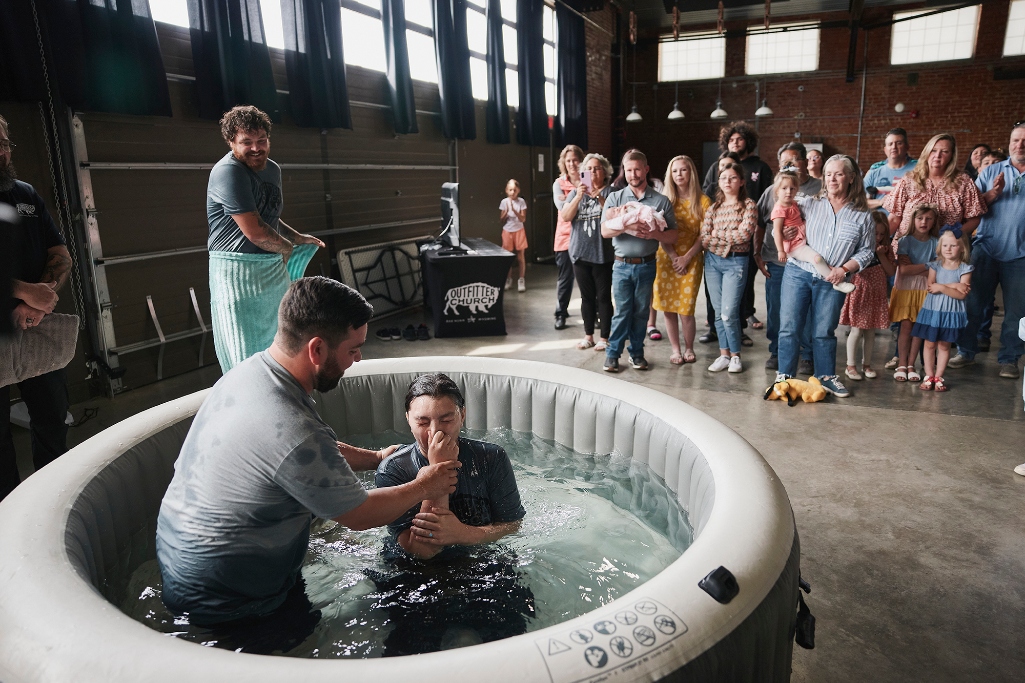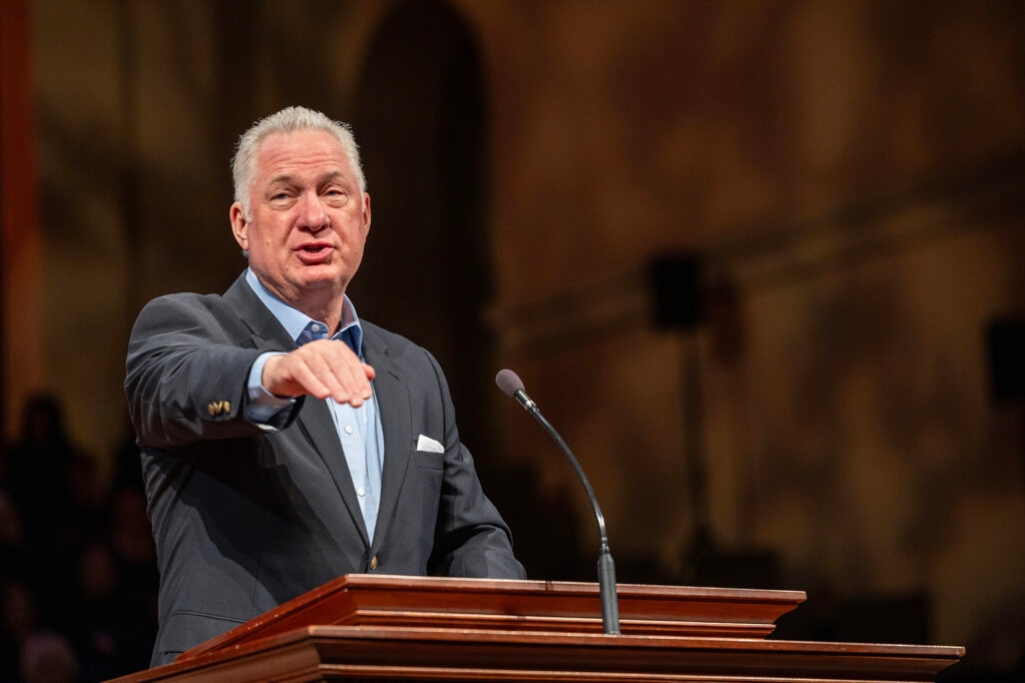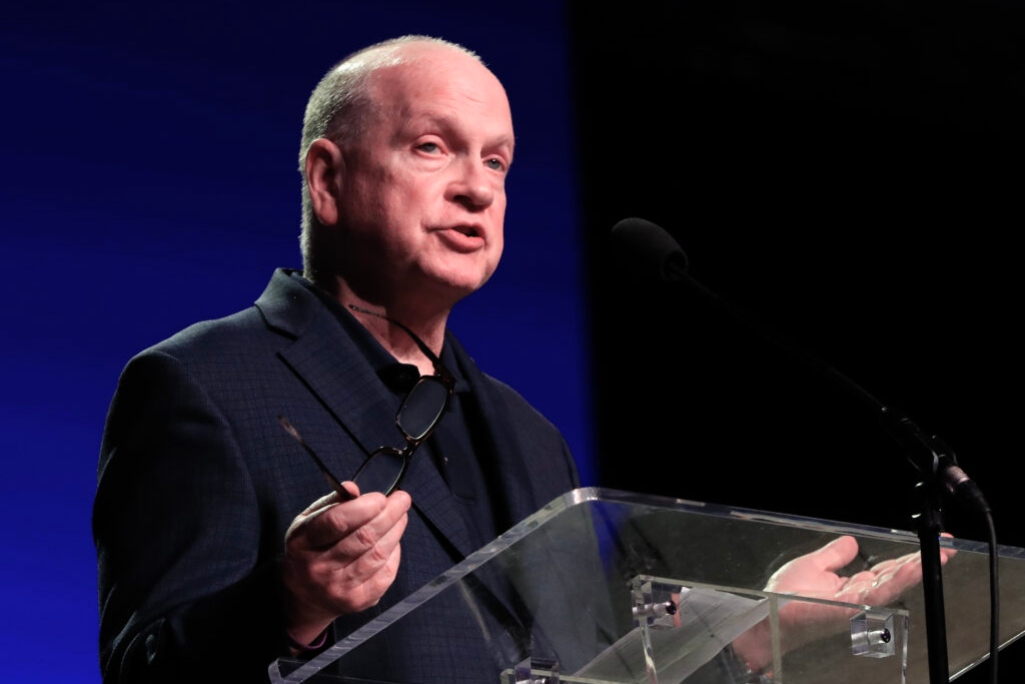
Tyler Martin baptizes a new believer at a church plant in Wyoming.
ALPHARETTA, Ga. (BP) — Terminology goes a long way in perception. It’s difficult to get a clear picture if words have different meanings on different sides of a conversation.
Take the phrase “NAMB church plant.” Since the 2010 messenger-approved Great Commission Resurgence Task Force (GCRTF) report that redirected the North American Mission Board’s (NAMB) emphasis to church planting, there have been calls to know how many churches the entity has started and how many are still viable.
The short answer to both questions is “zero.”
“We are careful to say that NAMB does not plant churches,” President Kevin Ezell said in a recent email interview with Baptist Press (BP). “Churches plant churches. We have worked hard since 2010 to make sure that every church NAMB helps plant has a sending church. That is a church that will take ownership in the plant and consider it its own, even if it didn’t come directly out of that sending church.”
The language of the GCRTF report does call for a “missional strategy” under NAMB’s responsibility to plant churches, desiring that half of the entity’s “ministry efforts” go toward “assist(ing) churches in planting healthy, multiplying and faithful Baptist congregations in the United States and Canada.”
It began with learning how to count.
“Prior to the GCR, there was not a standardized process for assessing, training, coaching and caring for church planters and their families,” Ezell told BP. “There was also not a standard way to count church plants. Each state convention did their own assessment and provided their own training. Some of it was great, and some of it not so great.”
Follow-up with church planters varied among state conventions. Ezell added that some planters told him shortly after he arrived in September 2010 how they only heard from NAMB when “something was wrong.”
Training, coaching and care improved, he said, through enlisting local pastors, sending church pastors and local association leaders “with a proven track record in church planting.” There was also the matter of upgrading the methods of tracking churches.
A chart provided by NAMB to Baptist Press reflects how the entity kept a singular record of “New Congregations” before 2010 that included church plants, new affiliates and campuses, but with no distinction for how many of which group. Even so, there were 953 new congregations in 1988. That figure climbed to 1,781 in 2004 before dipping to 1,364 in 2009.
Another graph provided by NAMB shows new congregations since 2010, designating how many are plants, replants, affiliates and campuses. The highest number came in 2014, with 1,193 new congregations.
It’s important to note the differences in reporting between the two eras, NAMB’s president pointed out.
“Before 2010, it literally was just a phone call from NAMB to each state convention asking, ‘How many churches did you start last year?’” Ezell said. “Some states misunderstood and gave the number of current plants they had. This led to double-counting of many church plants over the years.
“Since all NAMB requested was the number of plants, we have no way to go back to check and verify. Starting in 2010, we said we won’t count it as a church plant unless we can get the name of the planter, name of the church, address of the church and the SBC ID number.”
The first year requiring SBC ID numbers, 2010, recorded 1,192 new congregations — 769 of them plants and 423 as affiliates. The overall figure dropped the next year, but with 1,003 plants versus 83 affiliates.
Including an SBC ID number trimmed the number, as different state conventions had different definitions for what counts as a church, Ezell said.
“Now, each one is unique and there is no double-counting. Everything can be verified,” he said.
There is also a focus on “quality, not quantity.” A NAMB white paper presented to the Great Commission Resurgence Evaluation Task Force last year looked at the methods of 42 state conventions choosing their own methods for assessing, training, coaching and funding church planters. The paper said the result was a focus on churches planted, not the number that survived beyond a few years.
“Yes, we want to see Southern Baptists start as many new churches as possible,” Ezell said, “but we would rather have quality plants that are going to last, and for the last several years we see four-year survival rates at around 90 percent. These are new churches with staying power.”
Typically, churches averaged three years of funding pre-GCR, he told BP. “We transitioned that to four years, and in some cases, five years,” he said.
The fluctuation was due to another part of the GCR recommendations calling for church planting “with a priority to reach metropolitan areas and underserved people groups.”
“We are planting churches in very difficult places,” Ezell said. “That includes a lot of large cities as well, where the cost of living is significantly higher than what many parts of the South experience.
“Lostness is everywhere, but we are trying to plant in areas where often the culture is tougher. Sometimes there is even a hostility toward new churches.”
Those factors impact costs.
According to the information presented to the GCR Evaluation Task Force, as of February 2024, NAMB had 148 properties comprising 193 housing units for planters. Those investments are to help with the overall costs in each state, meeting the housing needs of planters. For example:
- Rent in New York City can average $2,900 a month.
- Groceries there are 30% more expensive than in Chicago.
- Median homes sold for $764,000 in Los Angeles, with an 800-square-foot apartment renting for $2,524.
As the multisite model gained traction, reporting was further divided in 2019 to identify campuses. That year, 59 of them joined 297 new affiliates and 552 plants for a total of 908. In 2021, plants and replants were split as 600 plants joined 135 replants, 201 affiliates and 82 campuses.
In 2024, the most recent numbers available, there were 964 total new congregations. The majority of those, 684, were plants. The next largest number was new affiliates, with 138, followed by 83 replants and 59 campuses.
NAMB doesn’t share survivability data beyond four years because by then, most congregations have moved beyond the funding and endorsement.
Basically, they are like other churches and report through the Annual Church Profile. Like other Southern Baptist churches, some don’t report at all.
COVID-19 made 2020 a bit of an outlier for churches in general, and much more so for congregations taking their first steps. Southern Baptists planted 538 churches that year as the survival rate dipped to 86.6%. It was the only year since 2017 that didn’t set an Annie Armstrong Easter Offering record as NAMB had to make cuts and draw from reserves to support missionaries.
Giving to the Annie offering has increased by around 30% since 2010.
That includes:
- A Michigan church planted in 2017 giving $102,000 to the Cooperative Program last year.
- A 2013 plant in Indiana giving more than $71,000.
- A church start from 2011 out of the Baptist Convention of Maryland/Delaware giving more than $70,000.
“People ask if our church plants are still around in a few years or if they are still Southern Baptist,” he said. “Not only are they still around and still Southern Baptist, but they are also some of the best giving and biggest baptizing churches in their state conventions.”
He pointed to a 2020 Michigan plant that baptized 186 last year, one in Iowa from 2013 that baptized 176, and a Boston plant that baptized 106.
“The recommendations from the Great Commission Resurgence Task Force profoundly transformed NAMB’s operations, emphasizing the critical role of church planting for Southern Baptists,” said Ezell. “Today, NAMB is more focused, efficient and committed to serving our churches than it was pre-2010.
“Although the mission field in North America continues to shift and evolve, the foundation established by the GCR has positioned NAMB to achieve maximum impact. Reaching North America for Christ is a monumental challenge that requires the collective efforts of all Southern Baptists – churches, associations and state conventions, as well as national entities. I am confident that NAMB is well-equipped to fulfill its vital role in this mission.”
(EDITOR’S NOTE — Scott Barkley is chief national correspondent for Baptist Press.)


